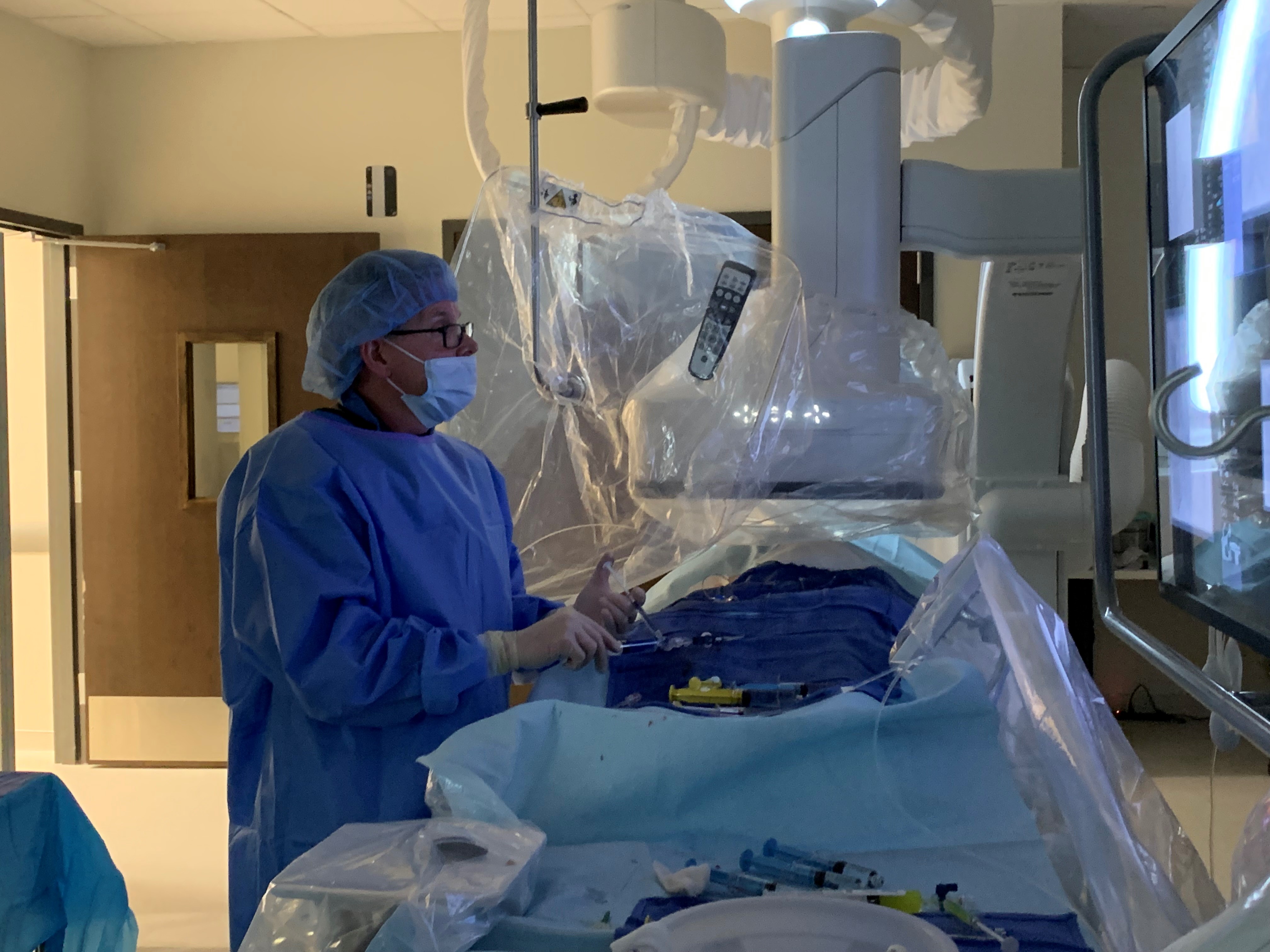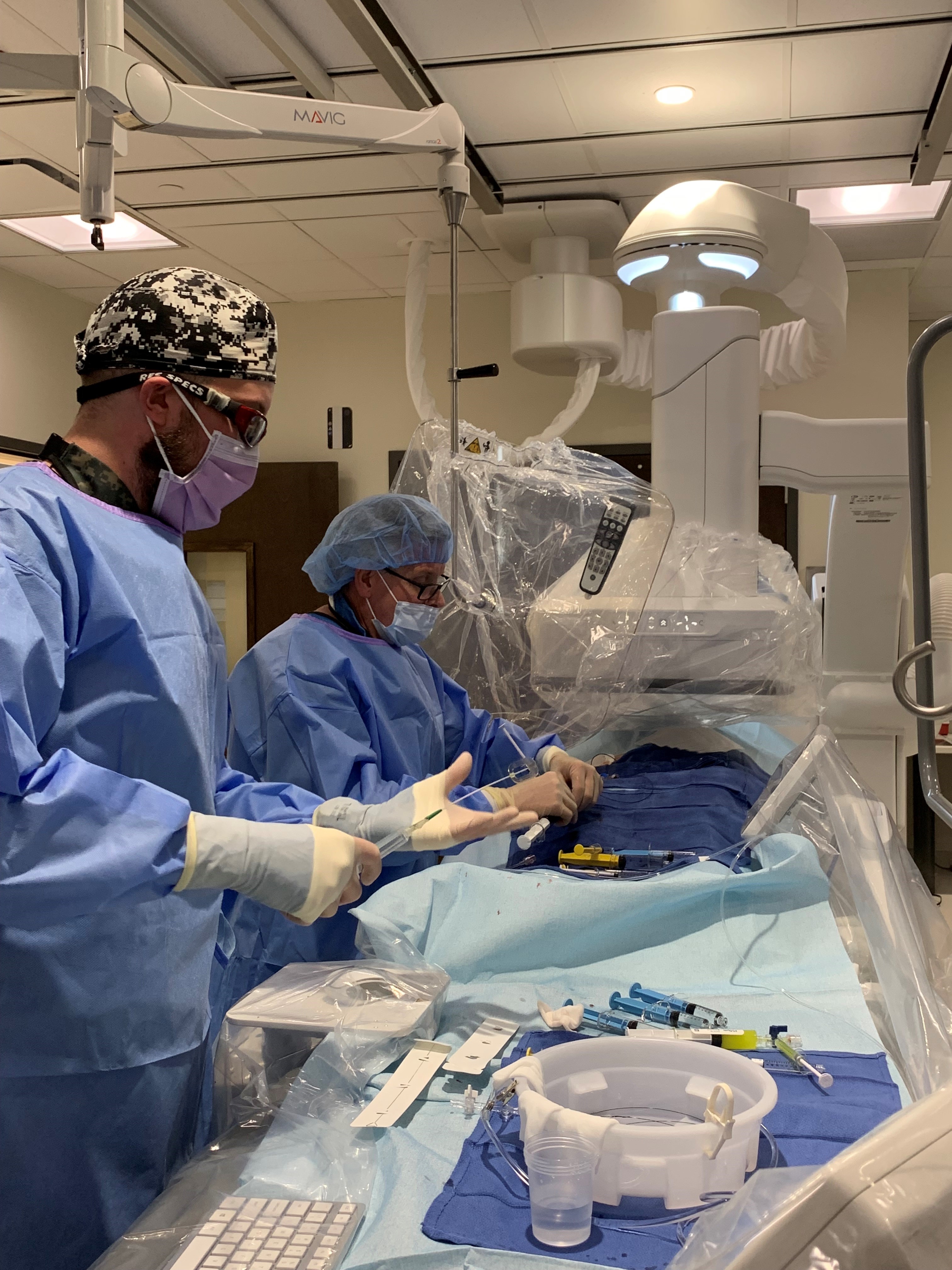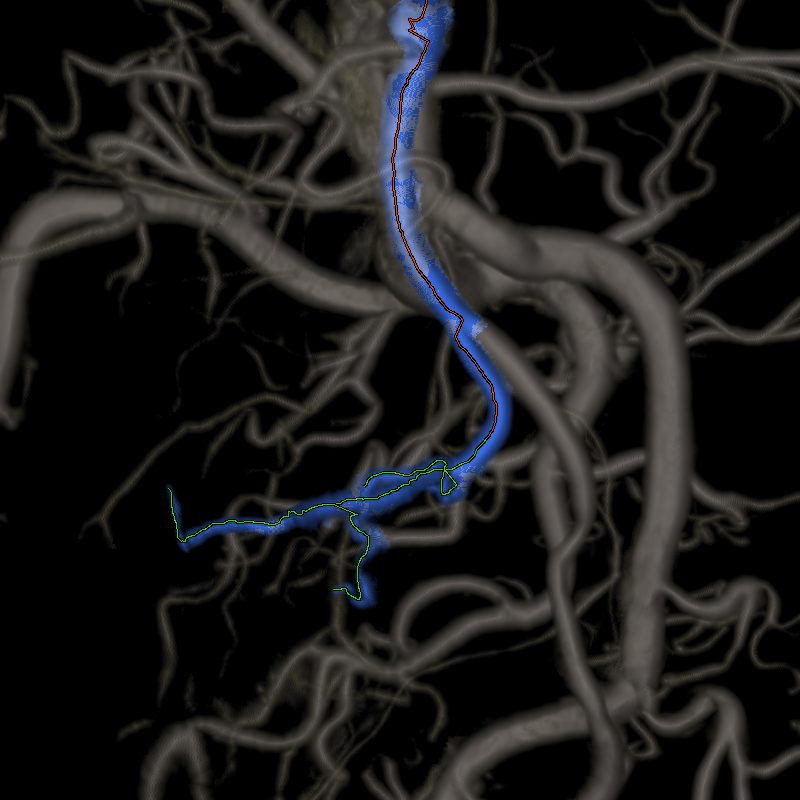As men age, the vast majority develop an enlarged prostate and, with it, benign prostatic hyperplasia (BPH), a noncancerous condition that can nevertheless seriously impact quality of life — and potentially lead to dangerous health outcomes. But an emerging minimally invasive technique called prostate artery embolization (PAE) is offering relief and providing men with an alternative approach to treating this condition and helping them return to normal life.
Men 40 and older are more likely to develop BPH — with about 50% of men between the ages of 51 and 60 experiencing some kind of symptoms, such as frequent urination, incontinence, and other kinds of pain. Although the condition itself is not considered life-threatening, if left untreated, BPH can result in chronic urinary tract infections, bladder stones, and kidney damage.
The prostate, a small gland that helps produce semen, grows bigger with age, most likely due to hormonal changes promoting prostate cell growth. Eventually the prostate starts pinching the urethra — the tube that carries urine and semen outside the body — making it difficult to urinate and empty the bladder completely.
With mild BPH symptoms, physicians may recommend lifestyle changes — like avoiding caffeinated or alcoholic beverages and exercising pelvic floor muscles — or medication. But when the effects start to impinge on a man’s lifestyle or sleep, a urologist might have to insert a catheter into the penis or surgically remove part or all of the prostate.
Unfortunately, the conditions that make a man more likely to suffer from BPH, including age, obesity, and heart disease, can also make him a riskier candidate for surgery. That’s partly why minimally invasive PAE is so promising.
PAE helps relieve troubling BPH symptoms without any cutting, use of a laser, or tissue removal. The procedure involves targeted release of microscopic particles into the arteries that feed the prostate. The particles stop blood flow into the gland and, over the course of several weeks, decrease its size.
Dr. Nutting (back) performing a procedure
Charles Nutting,* DO FSIR, is an interventional radiologist and one of the two founders of ECCO Medical in Denver, Colorado. Driven by his passion to provide his patients with quality care that improves their overall quality of life, he’s been on the forefront of minimally invasive procedures like PAE for more than two decades.
“Prostate artery embolization, or PAE, is a minimally invasive procedure that is all done as an outpatient procedure with nothing inserted into the rectum or penis,” explains Dr. Nutting. “In our experience at ECCO, the recovery is relatively quick and without some of the unpleasant side effects when compared to the alternative methods — with little risk of incontinence or sexual dysfunction from this procedure. Most men have some urinary frequency or urgency for the first couple of days and can have some pain at first following the procedure, but within 2 to 4 weeks our patients are returning to normal life and seeing significant improvement in their symptoms.”
When he first began administering PAE, Dr. Nutting would have to try and visualize the three-dimensional (3D) images of his patient’s prostate in his head, because the available imaging machines couldn’t adequately produce the 3D image he needed.
Dr. Nutting performing a prostate artery embolization procedure - GE HealthCare’s Embo ASSIST Virtual Injection technology highlighting a prostatic artery
Today he uses GE HealthCare’s Allia Image-Guided System (IGS) Interventional Radiology Suite in his practice to deliver precise and targeted treatments for complex and serious diseases and conditions like BPH.
“The Allia’s cone-beam capability and its advanced applications give us real-time image guidance as we target the specific area of the body we want to treat, whether that’s an enlarged prostate or a tumor inside of the liver,” Dr. Nutting says. “Embo ASSIST and other three-dimensional navigation tools generate a model, and I can think in my head, ‘Yes, this is where the catheter should be and this is how we should get there.’”
Designed with customers, for customers, GE HealthCare’s Allia IGS Platform represents the culmination of a multiyear collaboration with interventionalists and surgeons, with the goal of enhancing user experience, improving workflow efficiency, and increasing the adoption of advanced image guidance in daily clinical practice.
“The Allia platform allows us to be more precise about where we’re delivering our therapy, which can lead to improved outcomes,” says Dr. Nutting. “It also gives us the ability to provide a more complete treatment, because it’s not always just one artery that’s supplying an area. It could be several arteries going to the same location. We need to treat everything that we see.”
As demand for minimally invasive surgery continues to grow, GE HealthCare is committed to helping clinicians use image guidance technologies to their full potential, with the goal of helping providers achieve better clinical and operational outcomes.
“In my opinion, the Allia IGS System is the best imaging equipment for the embolization work that we do,” Dr. Nutting says. “I feel fortunate that I was able to provide input around the design of this technology that I use in my practice every day.”
The success stories of his patients keep Dr. Nutting inspired and excited by the field of interventional radiology, and his thirst for knowledge and expertise make him a trusted leader in embolization therapies.
“In our experience at ECCO, it’s incredibly satisfying to see patients do well with this therapy,” the doctor says. “There are so many patient stories of how this therapy is providing significant relief in their daily activities. It really can be life-changing, and that is very meaningful to me.”
* Paid consultant: Dr. Charles Nutting is a paid consultant for GE HealthCare and was compensated for participation in this interview. The statements made by Dr. Nutting here are based on his own opinions and on results that were achieved in his unique setting. Since there is no “typical” hospital, and many variables exist — e.g., hospital size, case mix, etc. — there can be no guarantee that other customers will achieve the same results.



